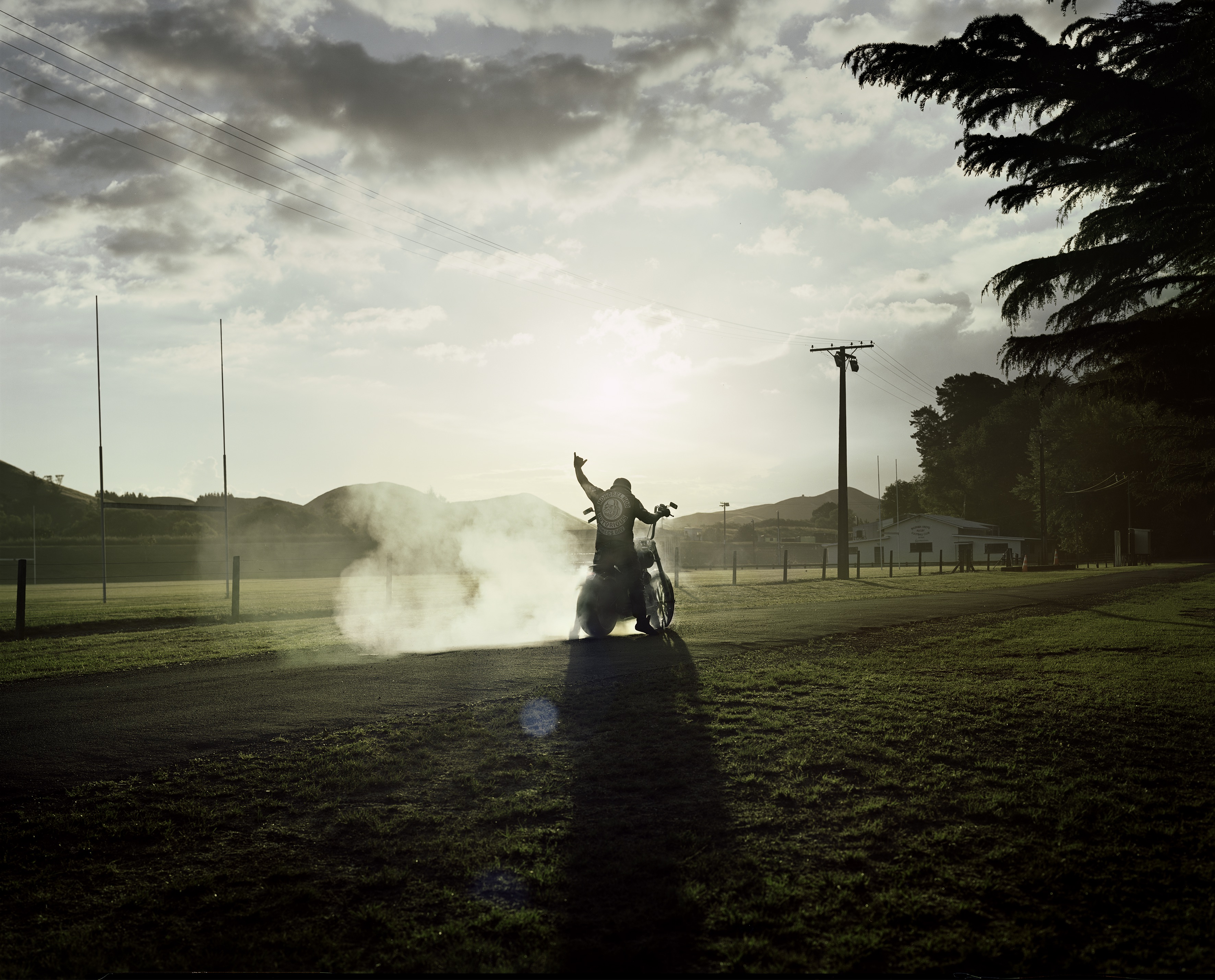
Image courtesy of Here Press & Jono Rotman ©
In a age where the individuality and identity of most subcultures is routinely eroded by commercial exploitation, the internet and ignorant re-appropriation, Mongrelism, published by Here Press and photographed by fourth generation New Zealander Jono Rotman, stands as a steadfast symbol and insight into the untouched underground. That isn’t to sideline or play down the seriousness of the Mongrel Mob Nation as a serious criminal organisation; one whose members have been convicted for crimes spanning murder, rape, drugs-based charges and more. An organisation that, with a dash of irony (as the vast majority of members are of Maori descent) have appropriated and absorbed Nazi paraphernalia, memorabilia and culture into their fraternity, in rebellion to the white society and rule that has impacted them so negatively, decades over. An organisation where laying down your life— whether by an obedient act of violence or by tattooing your face with your organisation’s insignia, is not only demanded but expected. However, none of this can take away the fact that the work of Rotman remains an artistic, cultural and to some extent, social-anthropological gem. To look upon Mongrelism is to look into the sheer darkness of society; to lift up the rock of the known world and see something surprisingly beautiful beneath it all.

Image courtesy of Here Press & Jono Rotman ©
Unlike Estevan Oriol or Boogie who documented the poverty, power and politics of predominantly American gangs the continent over, or even Anton Kuster who documented the Yakuza closely in Japan, Mongrelism, completed over a eight year period by Rotman is not an accumulation of covert snapshots of criminals— stolen moments or impromptu snaps. There is no dissociative black and white images to look upon, or the cropped ratio of a 35mm frame. Large format photography hides nothing and demands attention, both from the artist creating the images as well as the audience viewing them. The characteristic deep images, with their renaissance-style, predominantly seated subjects, makes the marrying of high-art and the very real criminal underworld, all that more palpable and controversial.
The publication itself is striking; bold and unafraid to put a little fear into the reader. The intricate cover, featuring a gold maori style self portrait by MMN member Little Man Rogue (RIP), epitomises just how important their identity or whakapapa is to members— something which is reiterated throughout a number of transcripts or Barks in the book. It is maybe these Barks— some between both Rotman and MMN members, with others between chapter leaders and their fellow men, which prompts a critique of sorts; as insightful, sometimes shocking and candid as they are, many of even the best seem much longer than necessary and could do with some editing down. Yet, thoughtful attention to detail throughout the book, not only redeem it but help make it exist as more than just another controversial photo series on the criminal underworld. Amongst the edit of portraits, there lies delicate fold-out hand drawn maps, archived collages and candid photos that help punctuate the lives of the men shown; simple isolated abodes, beautiful landscapes, modified american cars, animals both dead and alive and tombs of deceased members, that if nothing else help place these overtly masculine and notorious outlaws into the picture of the wider, universal human condition.

Image courtesy of Here Press & Jono Rotman ©
Intrigue and shock dominate throughout— babyfaced young men proudly don gaudy face tattoos, complete with swastikas and gang slogans. Verbal slurs and exultations of every kind accompany stories of past crimes, events and adventures. The list goes on. Still Mongrelism, although not for the faint hearted, is as authentic as they come.